
 |
Even before there was a line, BBC World News was there. In the morning, the destruction -- captured, played and played again and again by the news media.
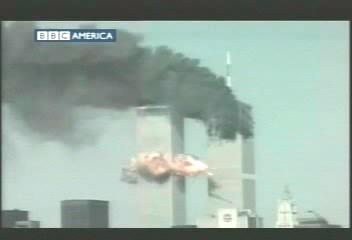 |
|
Click Image to Play Video [0:05]
|
In the evening there were reports of explosions in Kabul. Was it the U.S. retaliating? Was it the Northern Alliance avenging the death of their leader? What was going to happen next? BBC World News called on their senior foreign affairs editor, who had just spent two weeks in Afghanistan, for analysis.
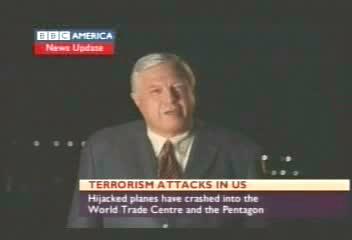 |
|
Click Image to Play Video [0:32]
|
On the day of the destruction he had already been to Afghanistan, and he could report. On the day of the destruction he prophesied -- quite accurately -- what would happen. It may have been prescience. It may have been fortuna. But it is surely the kind of manifest success that journalists seek.
 |
It was not long before there were lines. The bombing commenced on October 7. On October 8, BBC World News had pictures of the explosions in the skies and pictures of the destruction the bombs had wrought.
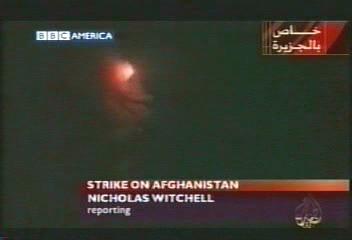 |
|
Click Image to Play Video [0:34]
|
Reporting from behind the lines. In this case it was the Taliban side of the line.
It was a bit more difficult to get to the other side of the line, according to another BBC reporter.
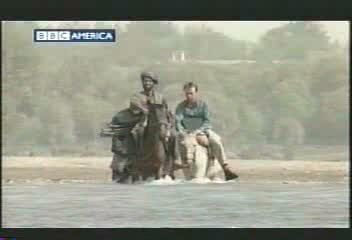 |
|
Click Image to Play Video [0:32]
|
Horseback? That is probably not the standard mode of transportation of BBC reporters. And when he got there he found the line in the sand. Trenches dug into the sand. Artillery that produced as much dust as smoke and more of both than injury to the enemy. But he was reporting from behind the line.
It is clear that BBC wanted to report from behind both sides of the line. Within a few days John Simpson was reporting from the trenches that were the Northern Alliance side of the line -- and no man's land, as well.
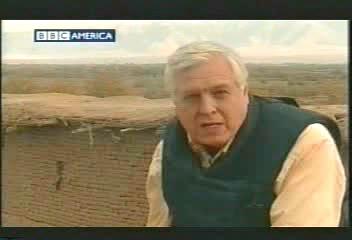 |
|
Click Image to Play Video [0:32]
|
Freedom of the press had not been a hallmark of the Taliban rule of Afghanistan. Reporting from behind their side of the line was more problemmatic. They were very suspicious of the press.
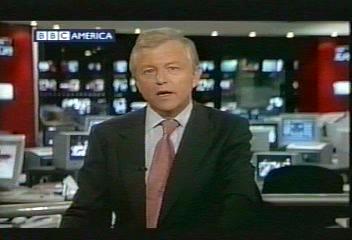 |
|
Click Image to Play Video [0:16]
|
On the third day of the attack the Taliban arrested a French journalist. However, that same day they released a British reporter who they had arrested earlier.
They acted as though they wanted their story told. They wanted the world to see the suffering that the bombing was producing. But they did not trust the media persons who would have to tell their story. It was a quandry.
The solution to the quandry, for the Taliban, was releasing the international journalists so they could report. But they limited the reporting to civilian damage. And they did not let the reporters check their, the Taliban, claims -- even about civilian suffering. The reports reflect this solution.
 |
|
Click Image to Play Video [0:32]
|
The Global News Media and Lines in the Sand
The technology has made global communication nearly instantaneous. It is from anywhere in the world to anywhere in the world in seconds, if you have the equipment that can be carried around in your suitcase.
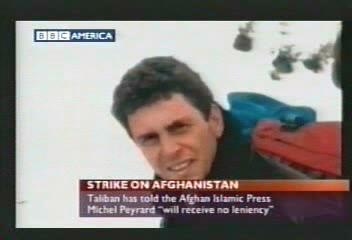 |
|
Click Image to Play Video [0:30]
|
One of the results has been the development of global news broadcasting. Their audience is the world. And they aggressively work to be on all sides of whatever line there is at the moment. The sides are often less enthusiastic about this relationship than are the reporters and broadcasters.
The development and the tensions involved are clearly articulated in the discussion about the French journalist who was arrested. The French editor was asked: What is the reporter doing in Afghanistan? How are you going to try to get him out? In answering those questions the editor recounts the history and the tensions.
Bosnia, Chechnya, Kosovo -- echoes of the past embedded in their understanding of what they are doing in Afghanistan.
 |
|
Click Image to Play Video [0:19]
|
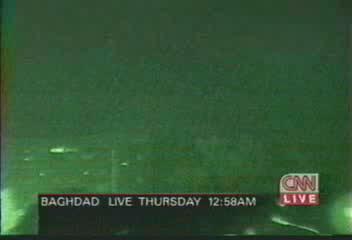 |
|
Click Image to Play Video [0:43]
|
He did not mention the most formative instance of reporting from behind the lines -- Iraq and the Persian Gulf War. CNN demonstrated that live-from-behind-the-lines was possible. It was a journalistic coup that set reporting for the next decade, and now into the twenty-first century.
Behind all sides of the line is possible. Behind all sides of the line is what global news broadcasters want to do.
1998 saw a rerun of the Persian Gulf War. For the entire year Iraq had been throwing the U.N. weapons inspectors out, producing criticism from the Security Council and threats from allies, and then permitting the inspectors back into the country. In November they tossed them out for one last time, and the U.S. and England lost patience. They began bombing, and CNN was there -- again.
In the eight years between 1990 and 1998 the global news broadcasters and Iraq had had ample opportunity to work through rules of the game. Everyone knew what to expect -- if warring broke out.
The first rule was: military secrets are not news. News reporters are not spies, and how much damage was inflicted by the bombing is not a subject for reporting.
Christiane Amanpour makes that point when she is asked about the damage she can see from where she is watching the bombing.
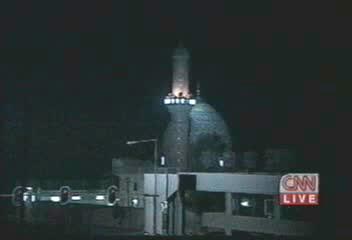 |
|
Click Image to Play Video [0:23]
|
"The Iraqis do have legitimate military security" -- secrecy, that is a restriction on reporting that has been accepted by the global news media. Otherwise they would not be able to be there.
The second rule: both sides get equal billing. Iraq, Yugoslavia, the Taliban -- they get to have their say, too. In reporting the bombing of Iraq this was handled with -- On the one hand; and on the other hand. Judy Woodruff does this two step in her introduction to the segments on the bombing.
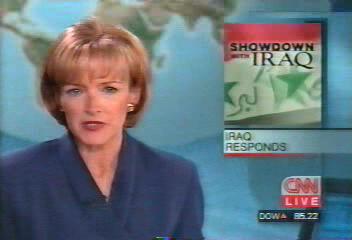 |
|
Click Image to Play Video [0:57]
|
© Francis A. Beer, G. R. Boynton, 2002